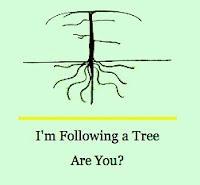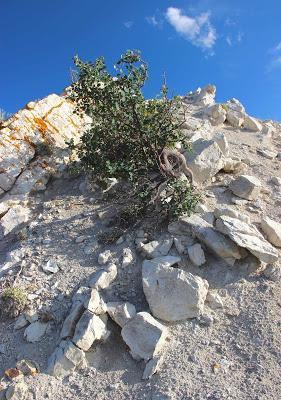
Awe-inspiring!
This month I’m making an oblique and tenuous segue from Tree-Following, for I have no news to report of my serviceberry. After a long vacation, all kinds of things have to be done right away! (of course ;-) Instead, this post is about one of its brethren growing nearby under challenging circumstances. Though it’s only a meter tall and technically a shrub, it’s as impressive and inspiring as a tree.
The serviceberry doesn’t sit directly on the ground but rather on a pedestal—which sounds lovely, but it was created by “erosion of soil from around the base of a plant such that it appears to be on a pedestal” (source). [Pedestaling usually refers to erosion, but frost heaving and accumulated soil or litter can create pedestals too. And I stumbled across a webpage that mentioned plants with pedestals of lateral roots—news to me.]
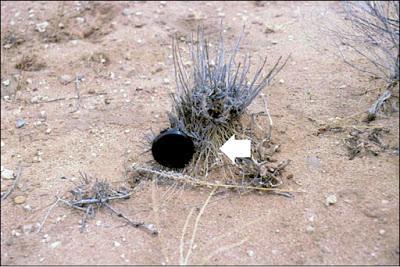
Plant on a pedestal created by erosion. Arrow points to exposed roots (source).
Range managers consider pedestaled plants indicators of over-grazing. A healthy allotment (pasture) has no pedestaling. If mature plants are on pedestals, the allotment is said to be at risk, and the stocking rate should be reduced. In worst cases, erosion has pedestaled all plants and exposed roots. These allotments are classified as unhealthy. Complete removal of livestock may be necessary for the range to recover.
The pedestal has all but disappeared, leaving the serviceberry standing on its roots.
But this serviceberry grows where no cow would ever think of going—on a steep slope where there's little to eat. However, slope and rock type make erosion inevitable. At the same time, the tilted beds of sandstone and siltstone offer benefits. Soil develops from softer siltstone. Seeds germinate, grow into seedlings, and send roots down to the water that falls as rain, and accumulates in underground fractures in the sandstone.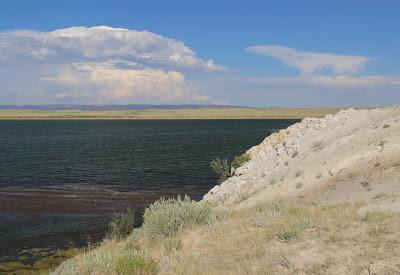
Serviceberry on Boulder Ridge (center of photo); Hutton Lake behind. Photos taken in August.

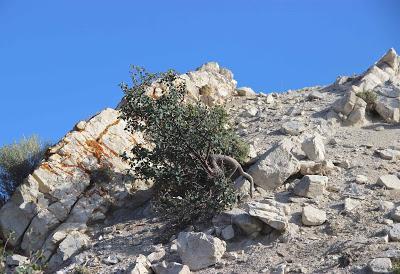
A wild currant grows here too, just visible behind the serviceberry.
In spite of the tough situation, these shrubs have enough vigor to produce fruit!
A wild currant (red) lies next to where the root enters the ground (click on image to view).
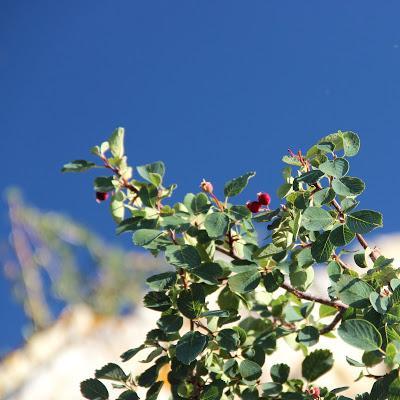
Serviceberries.

Boulder Ridge on the south side of Hutton Lake, Laramie Valley, Wyoming.
